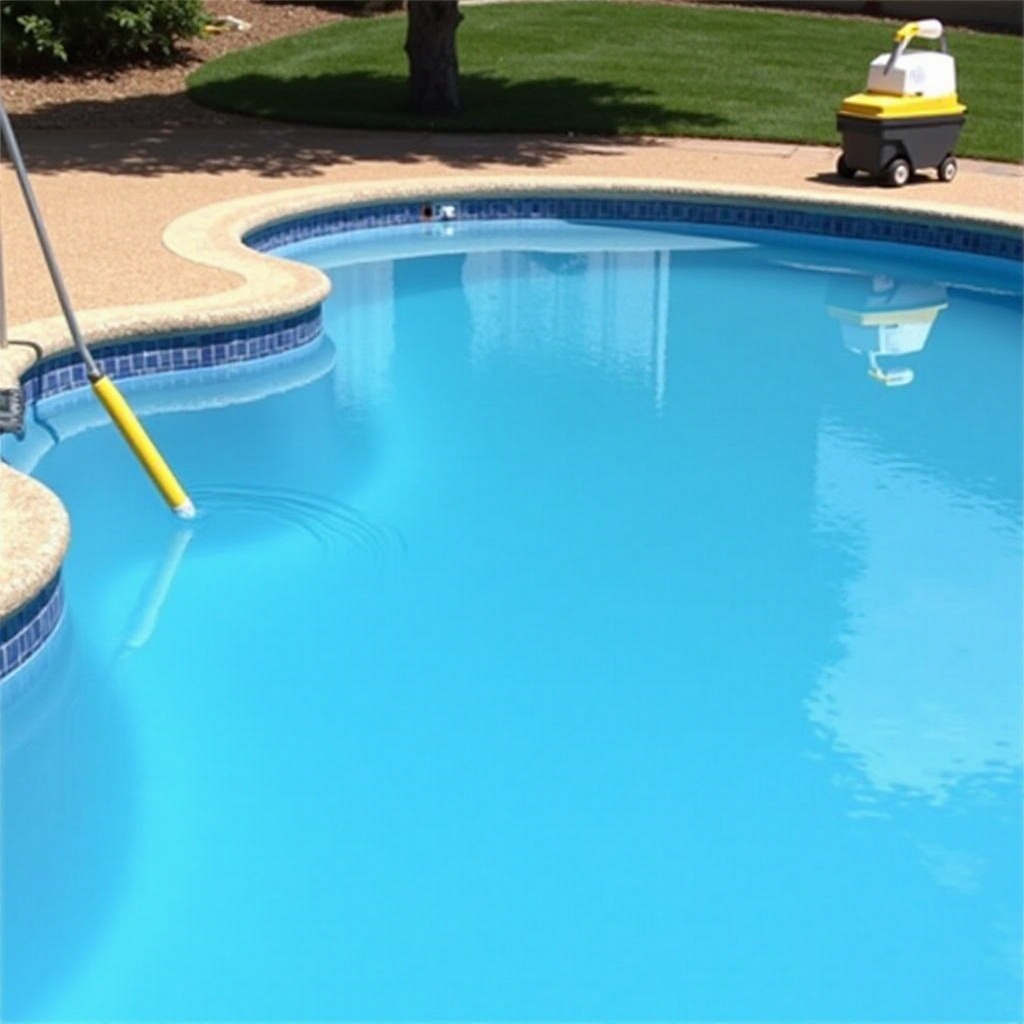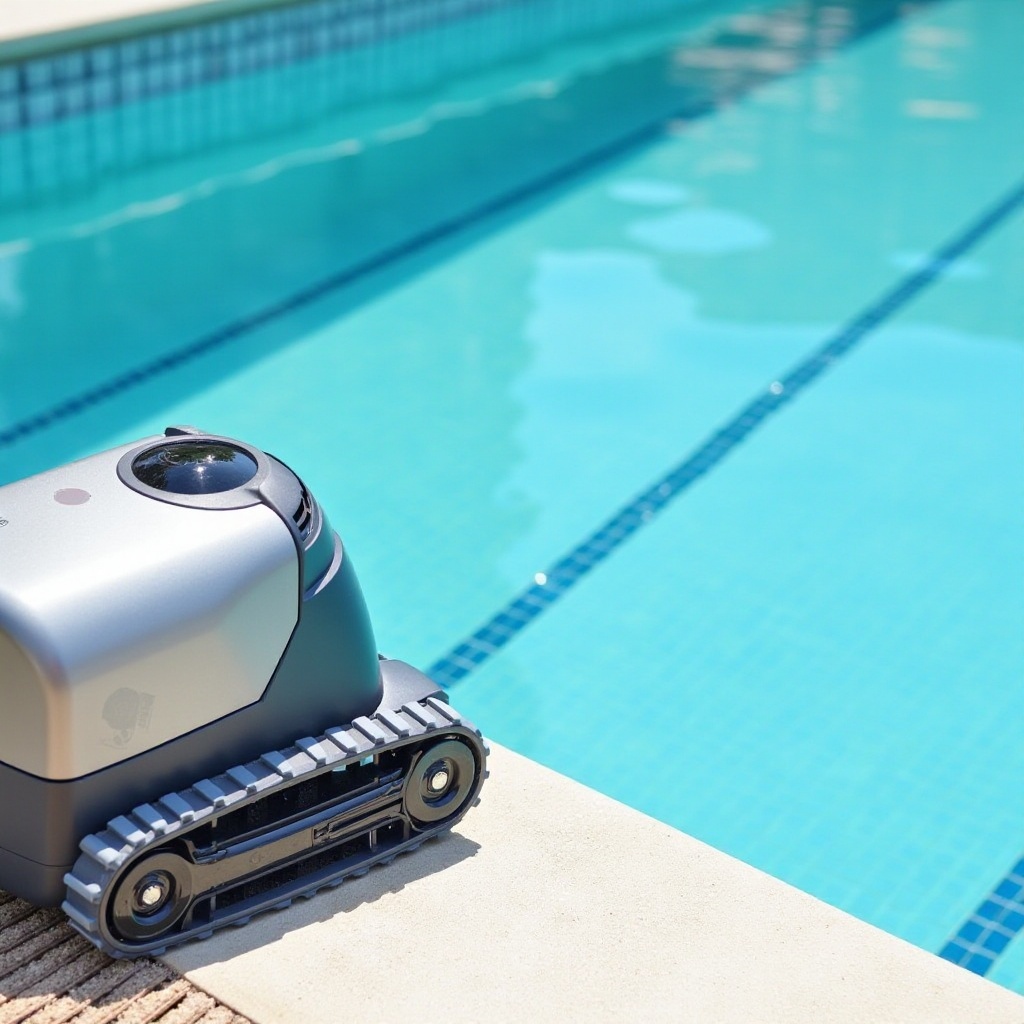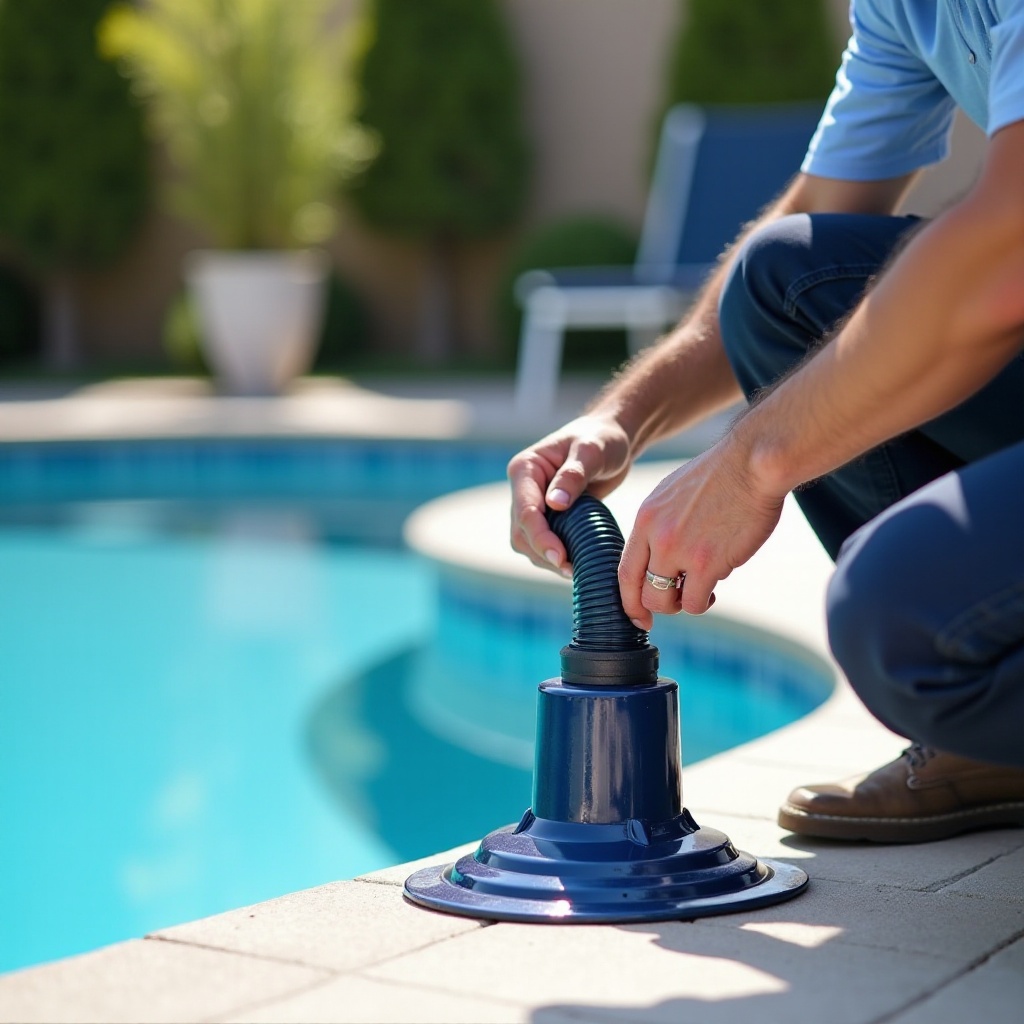Introduction
Owning a pool is a luxury, but maintaining it can seem daunting, especially when it comes to keeping it clean. One essential tool in your pool maintenance toolkit is the pool vacuum. Knowing how to turn on your pool vacuum properly is crucial for maintaining a pristine swimming environment. Whether you have a manual or an automatic pool vacuum, understanding how to operate them is the first step toward a cleaner pool. This guide will walk you through the detailed process of turning on and maintaining your pool vacuum, ensuring your pool stays crystal clear all year long.

Understanding Your Pool Vacuum
Before diving into the steps of turning on your pool vacuum, it’s important to understand the two main types: manual and automatic.
Manual pool vacuums involve a head that attaches to a telescopic pole and a hose that connects to your pool’s filtration system. These vacuums offer more control but require more effort, as you have to maneuver them around the pool yourself.
Automatic pool vacuums, on the other hand, work independently once you set them up. There are three types of automatic vacuums: suction-side, pressure-side, and robotic. Each type has its pros and cons but they all share a common goal – to clean your pool with minimal supervision.
Understanding which type of pool vacuum you have will help you follow the correct procedure for turning it on and using it effectively.

Preparing Your Pool for Vacuuming
Preparation is key to effective pool vacuuming. Before you start, here are the essential steps you need to take:
- Skim the Surface: Remove any leaves, insects, or floating debris using a skimmer net to prevent these from clogging your vacuum.
- Brush the Walls: Use a pool brush to scrub the walls and steps of your pool, loosening any dirt or algae that has built up.
- Check the Filters and Baskets: Ensure that your pool’s filters and skimmer baskets are clean. This helps maintain the vacuum’s suction power and efficiency.
- Water Level: Ensure your pool’s water level is adequate, typically halfway up the skimmer opening. Low water levels can affect the performance of the vacuum.
Having the pool ready in this manner sets a solid foundation for effective vacuuming, whether you’re using a manual or automatic system.
Step-by-Step Instructions to Turn On the Pool Vacuum
Manual Pool Vacuums
- Attach the Vacuum Head to the Telescopic Pole: Start by connecting the vacuum head to the telescopic pole so you can maneuver it easily around the pool.
- Attach the Hose to the Vacuum Head: Secure the hose to the vacuum head. Ensure that it fits tightly to maintain suction.
- Fill the Hose with Water: Submerge the hose in the pool, allowing it to fill with water. This process helps to remove any air pockets that might reduce suction.
- Connect the Hose to Your Skimmer: Attach the other end of the hose to the dedicated suction port or the skimmer. If using the skimmer, remove the skimmer basket and plug the hose into the suction line.
- Turn on the Pool Pump: Activate your pool pump to start the suction process. You should now see debris being sucked up by the vacuum head.
- Vacuum the Pool: Maneuver the vacuum head across the pool floor slowly to ensure thorough cleaning.
Automatic Pool Vacuums
- Choose the Right Vacuum for Your Pool: Ensure you have the correct type of automatic vacuum (suction-side, pressure-side, or robotic).
- Connect the Necessary Hoses and Accessories: For suction-side and pressure-side vacuums, connect the hose to the designated port.
- Submerge the Vacuum: Place the vacuum in your pool. For robotic units, simply submerge them.
- Turn on the Pool Pump or Plug In the Robotic Vacuum: Depending on your vacuum type, either activate the pool pump for suction/pressure vacuums or plug in and program your robotic vacuum.
- Monitor the Cleaning Process: While automatic vacuums require less supervision, keep an eye on the process initially to ensure it’s working correctly.
By following these steps, you can effectively operate both manual and automatic pool vacuums, ensuring your pool remains clean and inviting.
Maintaining Your Pool Vacuum
Proper maintenance of your pool vacuum ensures longevity and performance:
- Clean the Filters and Hoses: After each use, check and clean the filters and hoses to prevent clogs and maintain suction.
- Inspect the Vacuum Head and Brushes: Look for wear and replace parts as necessary to ensure effective cleaning.
- Store Properly: When not in use, store your vacuum in a dry, shaded area to protect it from the elements.
Regular maintenance is crucial to keeping your vacuum in top working condition, making pool cleaning easier and more efficient.

Conclusion
Knowing how to turn on your pool vacuum and keep it maintained is essential for a clean and enjoyable swimming experience. By following this comprehensive guide, you can ensure your pool vacuum operates optimally, keeping your pool clear of debris and inviting all season long. Regular maintenance and correct operation will extend the life of your equipment and enhance your overall pool maintenance routine.
Frequently Asked Questions
Why is my pool vacuum losing suction?
Your pool vacuum may lose suction if there are clogs in the hose, a dirty filter, or air pockets. Always check and clean these components regularly.
How often should I use my pool vacuum?
For optimal cleanliness, vacuum your pool at least once a week. During high usage periods, such as summer, more frequent cleaning may be necessary.
Can I leave my pool vacuum in the pool all the time?
It’s not recommended to leave your pool vacuum in the pool all the time as prolonged exposure to water and chemicals can wear down its components. Always store it properly after use.


